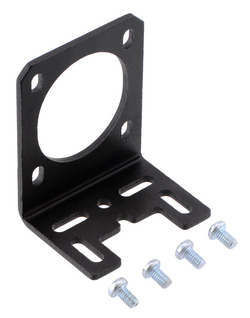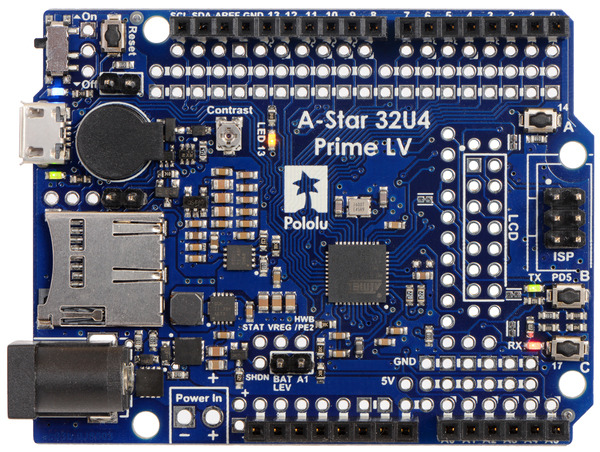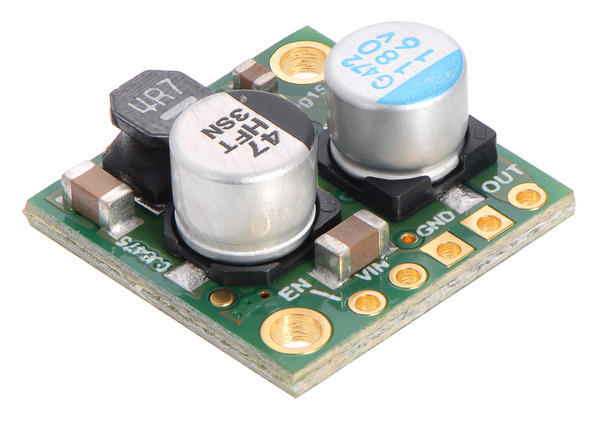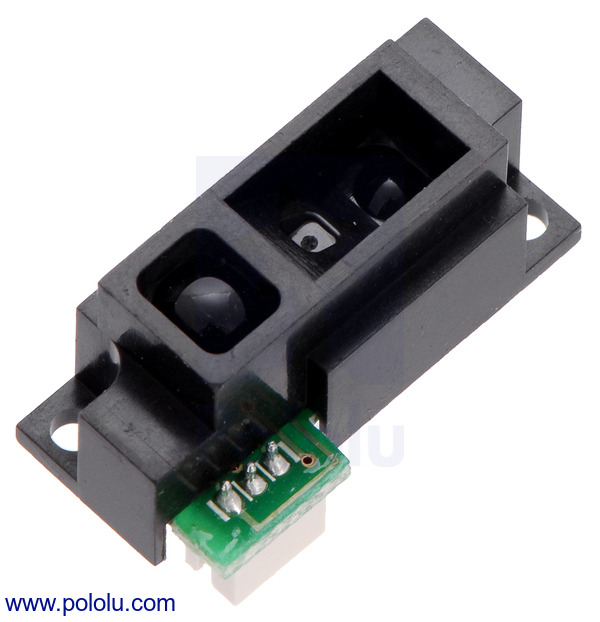Pololu Blog »
Pololu Blog (Page 53)
Welcome to the Pololu Blog, where we provide updates about what we and our customers are doing and thinking about. This blog used to be Pololu president Jan Malášek’s Engage Your Brain blog; you can view just those posts here.
Popular tags: community projects new products raspberry pi arduino more…
Closed December 25 and January 1
We will be closed for Christmas on Thursday, December 25 and for New Year’s Day on Thursday, January 1, so orders placed after 2 PM Pacific Time on the 24th or 31st will be shipped on the following Friday. Additionally, FedEx Ground does not ship on the 24th (today).
Merry Christmas and Happy New Year!
New product: Aluminum mounting bracket for NEMA 14 stepper motors
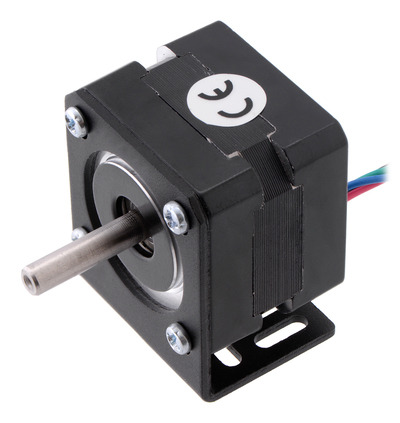 |
This new stepper motor bracket is designed to work with typical NEMA 14-size stepper motors, including all of the NEMA 14 stepper motors we carry. It is made from 2mm-thick black anodized aluminum, and like the larger NEMA 17 bracket we released earlier this year, it features slot cutouts to allow for a variety of mounting options.
|
|
For more information, see the product page.
New product: 56:1 Metal Gearmotor 20Dx42L mm
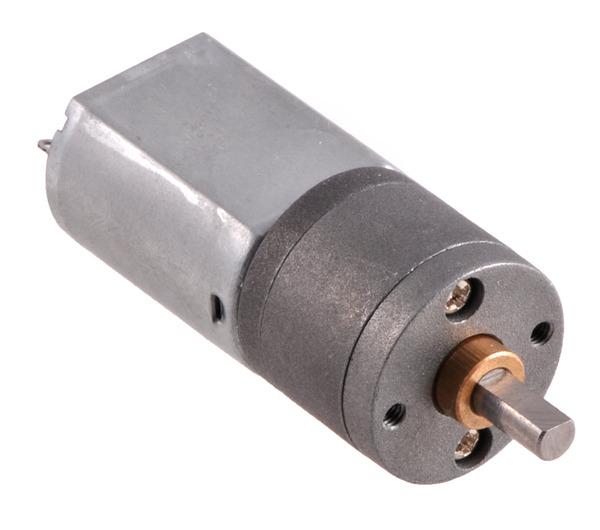 |
We have added a new gear ratio to our 20D mm line of metal gearmotors. This gearmotor has a 56:1 gearbox, resulting in a no-load speed of 250 RPM and a stall torque of 45 oz-in at 6 V.
Year-end Inventory Reduction Sale
 |
In case you missed our Black Friday Sale or are just looking for a last-minute deal before Christmas, check out our year-end inventory reduction sale!
New product: A-Star 32U4 Prime LV
The A-Star 32U4 Prime LV is the newest member of our A-Star family of programmable microcontroller boards. This is the first Pololu board with the familiar Arduino shape: it shares the pinout of the Arduino Leonardo and should work with Leonardo-compatible shields. With some code changes, this A-Star can also serve as a substitute for the similar Arduino Uno in many projects. However, there is a lot more to it than Arduino compatibility!
 |
Unlike the Uno and Leonardo, the A-Star Prime has an efficient 5 V switching regulator and a seamless USB power switching circuit. This “LV” model uses the same power circuit, based on the Texas Instruments TPS63061 and TPS2113A, as the A-Star 32U4 Mini LV. Like that board, the A-Star 32U4 Prime LV can operate from 2.7 V to 11.8 V and supply about 1 A at 5 V, safely and efficiently switching between USB and external power without the limitations of components like fuses or diodes. It also includes a power switch, multiple power input connection points, and optional battery voltage monitoring, making it convenient to use in a variety of power supply scenarios. Here is a diagram of power distribution on the board:
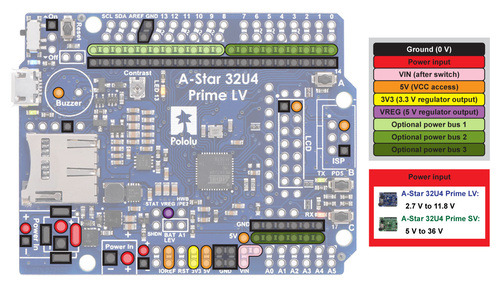 |
As you can see in the pictures, there are few extra rows of pins next to the normal Arduino headers. The point of these is to give you more connection options: we have included an extra access point (on a 0.1" grid) for most of the pins, as well as extra power and ground buses. The power buses are unconnected by default, so you could, for example, wire VIN directly to a bus and solder in servo connectors in one place (the LV regulator works great on a four- or five-cell NiMH pack), while having another bus run at 3.3 V to power an array of low-voltage sensors. As another example, these buses are a convenient place to add your own custom pull-up or pull-down resistors.
There is a lot of space available in this form factor compared to the typical Pololu breakout board, and we hate to waste space, so we packed it with extra, optional peripherals:
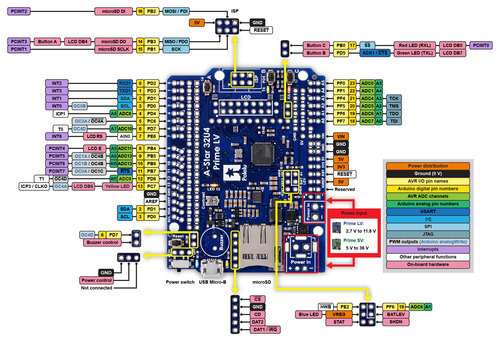 |
You might recognize some of the optional peripherals from our line of Orangutan Robot Controllers and the 3pi Robot. These are features that we have found really handy in our projects over the years: three user pushbuttons (sharing the MISO, RXLED, and TXLED lines), a buzzer for beeps and simple music (optionally controlled by digital pin 6), and a connector for an HD44780-based character LCD. You can enable just the features you want with jumpers; the ones you do not use will not interfere with shields or other electronics. On some models, we are also including a microSD card slot that works with the Arduino SD library, so you can easily turn your A-Star Prime into a datalogger or access large scripts and media files.
Here is what the A-Star 32U4 Prime LV looks like with all optional peripherals installed:
 |
This configuration is available pre-assembled as Pololu item #3109, while a configuration including pretty much everything but the LCD is available as Pololu item #3108. (You can still install an LCD yourself later.) For other configuration options, please see the individual product pages below or the A-Star 32U4 Prime LV category page.
New products: D24V25Fx 2.5 A step-down regulators available in new voltages
We just released 3.3 V, 6 V, 7.5 V, and 9 V versions of our D24V25Fx regulators, previously available only in a 5 V version. The D24V25x is a family of step-down regulators that take an input voltage as high as 38 V and have a typical maximum output current around 2.5 A. For more information, take a look at one of the items listed below or check out our step-down voltage regulators category page.
New product: Sharp GP2Y0A51SK0F Analog Distance Sensor 2-15cm
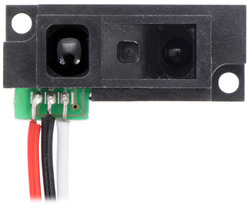 |
Sharp GP2Y0A51SK0F Analog Distance Sensor 2-15cm with wires soldered directly to the sensor PCB. |
|---|
We are now carrying the short-range Sharp GP2Y0A51SK0F Analog Distance Sensor. Like the GP2Y0D815Z0F we released a few months ago, this sensor has a maximum intended sensing range of 15 cm, but unlike that other sensor, this module tells you where the detected object is in its 2 cm to 15 cm range. Its close minimum sensing distance of 2 cm and high 60 Hz update rate make this a great choice for close-proximity range-finding, or the analog voltage output can be passed through a comparator to make an adjustable-threshold alternative to our digital Sharp distance sensors.
This sensor uses a 1.5 mm pitch JST ZH connector, which is different from the connectors on all the other Sharp sensors we carry. Unfortunately, this means it will not work with the JST PH cables we recommend for use with some of those other sensors. We are working on getting compatible cables, but in the interim, it is not too difficult (but not exactly easy) to solder wires directly to the output pins like in the picture on the right.
This sensor is also quite a bit smaller than most of the other analog Sharp sensors, so it will not work with our new brackets.
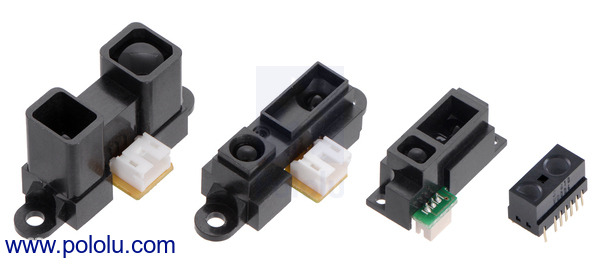 |
A variety of Sharp distance sensors. From left to right: GP2Y0A02, GP2Y0A21 or GP2Y0A41, GP2Y0A51, and GP2Y0D8xx. |
|---|
For more information, see the GP2Y0A51SK0F product page.
Robotic arm using Mini Maestro at the Nashville Mini Maker Faire
Inspired by this robotic arm tutorial, Andrew Hoover recently posted on our forum about a robotic arm he made for the Nashville Mini Maker Faire. The arm is constructed from laser-cut acrylic and actuated by hobby RC servos. The servos are controlled by a 12-Channel Mini Maestro, which reads the signals from joysticks and converts them to target positions using a Maestro script. You can see the arm in action in this video:
For more information on the project, you can check out Andy’s blog post for his robotic arm project, which includes a parts list, instructions, and code.
Automated ball path contraption for the holiday season
Bruno Schneider posted the above video on our forum that showcases an automated ball path machine he made for last year’s advent season with his brother and father. The contraption uses a 24-channel Mini Maestro and is displayed in the window of his mother’s sewing shop. The machine is fun and impressive by itself, but the video (with accompanying sound effects) makes the project even more entertaining.
If you make or have made any festive projects using the Maestro or any of our other products, we would love to see them! You can post them in the comments below or in the Share Your Projects section of our forum, which is also a great place to browse for inspiration or ideas for a new project.
Last Call: Black Friday/Cyber Monday Sale
Less than 12 hours to go for our Black Friday/Cyber Monday sale! Manufacturing and shipping are working hard to make your robot parts and ship them out. If you already placed an order, thank you! Customers who ordered earlier in the sale have already started to receive their packages Continued…

